#Derrick Delgado
Photo

“Critical race scholars are discontent with liberalism as a framework for addressing America’s racial problems. Many liberals believe in color blindness and neutral principles of constitutional law.
Crits are also highly suspicious of another liberal mainstay, namely, rights. Particularly some of the older, more radical CRT scholars with roots in racial realism and an economic view of history believe that moral and legal rights are apt to do the right holder much less good than many would like to think.”
-- Richard Delgado and Jean Stefancic, “Critical Race Theory: An Introduction (Third Edition)”
Many people mistake Critical Race Theory for a continuation of the liberal Civil Rights Movements, which demanded America make good on the constitutional promise of fairness: “created equal.”
But crits (their word) are explicitly antiliberal, and don’t just view the Civil Rights Movements as a failure, they view it as a part of a conspiracy.
As Critical Race Theory architect Derrick Bell puts it, “progress in American race relations is largely a mirage obscuring the fact that whites continue, consciously or unconsciously, to do all in their power to ensure their dominion and maintain their control,” and therefore “we have made progress in everything yet nothing has changed.” Indeed, they regard the US in particular as even more racist than before the Civil Rights Movements, because now that racism has plausible deniability.
"From the standpoint of education, we would have been better served had the court in Brown rejected the petitioners' arguments to overrule Plessy v. Ferguson," Bell said, referring to the 1896 Supreme Court ruling that enforced a "separate but equal" standard for blacks and whites.
-- Stanford Report, “Black children might have been better off without Brown v. Board, Bell says” (April 21, 2004)
To the extent that any wokes or anyone engaged in Critical Theory-based “antiracist” evangelism insist that they are fighting for “rights,” we can be certain that - like the overwhelming majority of Xians - they have not read their own doctrine.
#critical race theory#Derrick Bell#Richard Delgado#Jean Stefancic#Civil Rights Movement#civil rights#wokeness as religion#cult of woke#antiracism#antiracism as religion#liberalism#liberal ethics#liberal values#antiliberalism#anti liberalism
15 notes
·
View notes
Text
i hate timtok bc everyone says “crt is this” and “crt is that” and they’re wrong every damn time. doesnt matter what part of the political spectrum they’re always wrong. y’all clearly haven’t read a single crit’s work please stop being so loud
0 notes
Text
The Storm Bringer (Information and History)

PHYSICAL DESCRIPTION:
——————————————————————————
LOCATION:
Dock of Arendelle (sometimes after d3),
Dock of Auardon (sometimes after d3),
Dock of Corona (sometimes after d3),
Dock of Neverland (sometimes after d3),
Dock of the Isle of the Lost (d1-d3).
OWNER(S):
Blackbeard (Captain)(Previously),
Hannah Hook (Captain)(Current),
René Montaudoin (Captain)(Previously).
WORKERS:
Aaron Bog (The Treasuer),
Abi Hun (Crewmate)(Former),
Alex Aoratos-Sinclair (Helmsman),
Amira Bint Aladdin Bin Cassim Al Hamed of Agrabah (Translator)(Future),
Anna Bog (The Lawyer),
Artemis Foundling (Junior),
Atlas Foundling (Junior)(Future),
Atticus Hook (Babysitter Crewmate)(Former),
Beau Foundling (Junior),
Clarice Foundling (Junior)(Future),
Craven Bog (Junior)(Future),
Credence Foundling (Junior),
D.E Anonymous (Anonymous Helper),
Darcy Aoratos (The Medic),
Darius Foundling (Junior),
Darren Foundling (Junior)(Future),
Derrick Red (Crewmate)(Former),
Eduardo Frollo (The Cooper),
Elara Foundling (Junior),
Evelyn de la Cruz (The Prison Guard),
Fiona Foundling (The Look Out),
Francesca Delgado (The Boatswain),
Genesis Flores (The Navigator),
Greyson Hook (Crewmate)(Former),
Gunner Harp (Back up Medic),
Harley Foundling (Junior),
Haul Bjorgman (The Deckhand and Translator)(Future),
Herlando Dancer (Back up Medic),
Hope Sid (The Entertainment and h.r. Representative),
Howiee Wolf (Guard),
Ian Hook (Crewmate)(Former),
Ike Bog (Junior)(Future),
Issac Cipher (Front Desk Attendant),
Isaac Olympian (Crewmate)(Former),
Isaac of Maldonia (Crewmate)(Former),
James Rourke (The Rigger),
Joey Starlights (Crewmate)(Former),
John Facilier (The Gunner),
Jolene Bog (Junior)(Future),
Josh de la Cruz (The Sailmaker),
Joy Foxworth (The Back Up, Back up Kid Wrangler)(Future),
Kailani ‘Clever’ Athanasiou (Storm Manager),
Lance Foundling (Junior)(Future),
Levi Giant (Junior),
Liberty Titan (The Backup Carpenter),
Luke Tremaine-Westergaard (1st Mate),
Luís Barbosa (The Carpenter),
Lysander Foundling (Junior),
Marcys Foundling (Junior),
Marinette Foundling (Junior),
Misty Del Rey-Silver (The Diver),
Morgan Hook (Crewmate)(Former),
Moxie Frankenstein-Van Helsing (Guard),
Nadia Foundling (Junior),
Nevin Hook (Crewmate)(Former),
Noah Aoratos (The Cabin Boy),
Noor Foundling (Junior),
Parker McLeach (The Powder Monkey),
Peachy Gothel (3rd Mate),
Prometheus Foundling (Junior)(Future),
Remi de Vil (4th Mate),
Rian Frankenstein-Van Helsing (The Trainer),
River Le Beak (Crewmate),
Shan Bri (The Back up Kid Wrangler),
Shania Silver (The Kid Wrangler)(Former),
Shaun Fagin (Crewmate)(Former),
Skelebar Foundling (Junior)(Future),
Skia Aoratos (2nd Mate),
T.K Sykes (Crewmate)(Former),
Terrance Foundling (Junior),
Tiger Khan (Translator),
Tim Foundling (Junior)(Future),
Toby Foundling (Junior)(Future),
Tommy Wonderful (Junior),
Treycor Fae-Aoratos (The Quartermaster),
Tyson Foundling (Junior),
Willow Hawthorne (Junior).
VISITORS:
Captain Hook,
Ginny Gothel,
Hadie,
Harry Hook,
Mal,
Maleficent’s Goons,
Mama Hook,
The Gothel Twins,
The Smee Twins,
Zarina,
Etc.
FINAL STATE:
Intact.
——————————————————————————
"Creatures of the Night, Prepare to fight!"
THE CREW'S BATTLE CRY.
The Storm Bringer is the name of a pirate ship that Hannah Hook and her crew own.
It served as headquarters for the pirate crew and can be seen throughout the series 'The Marvelous Misadventures of Hannah Hook and Co.'
——————————————————————————
Description:
——————————————————————————
The Storm Bringer is an old pirate ship that Hannah Hook won and fixed up for her crew. Repurposing it as a safe house/boat/home for her crew and replacing the sails with three homemade sails that have a matching flag up on the crowsnest, a single red flag, and two additional crimson red flags.
Its walls are covered in artwork that she and her crew made as well as random treasures they have picked up over the years.
The wood is mainly brown with hints of red in some places and it has many rooms that the crew share (some of these ‘rooms’ are just areas with curtains hanging up to separate them.
It is one of the few ships on the isle that is almost fully intact and the shape its in has been described as ‘remarkable’ by the few older pirates that have stepped abroad since the ship came into Hannah Hook’s possession.
——————————————————————————
History:
——————————————————————————
Hannah Hook acquired the Storm Bringer from it's pervious owner, Blackbeard, in a poker game that she bested him at when she was 6.
In that game, she not only gained a ship but two new enemies (Blackbeard and his son, Barnaby) and the respect of the elder pirates on the isle.
Her first three crew members were Luke Tremaine-Westergaard and Skia Aoratos (her 1st and 2nd mate respectively) and River Le Beak (who decided to just be a crewmate) who helped her build her crew and repair the ship.
They ended up renaming the ship 'The Storm Bringer' and replacing it's old sails with ones they made themselves before tossing the ones in the storage closet.
And over the years, Hannah and her crew ended up redecorating the ship to make it feel more like home. Using art pieces they each made, rewards they'd received, and random treasures they had found to do so.
They even added on to the ship, making more rooms and making it look more intimidating and wild in the process.
——————————————————————————
Gallery:
——————————————————————————
(Old Design):
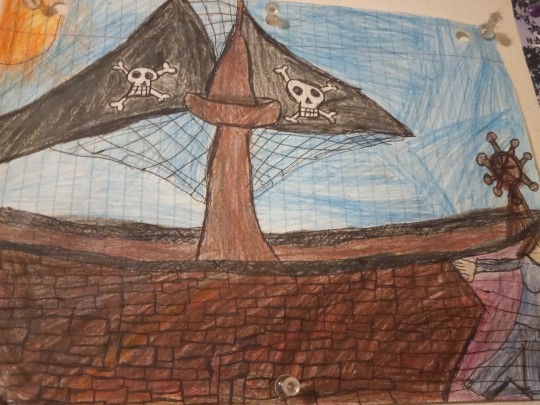
(New Design):

(Edit):
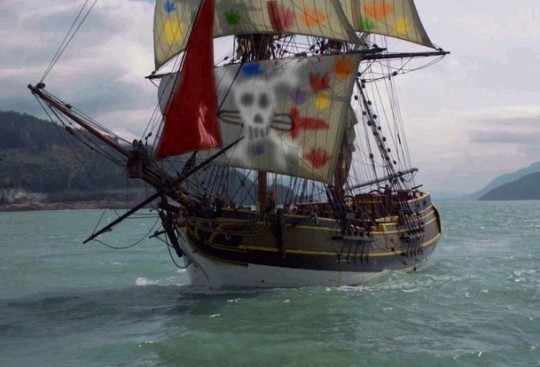
(Storm Bringer Contract):

(Storm Bringer Crew Tattoo):
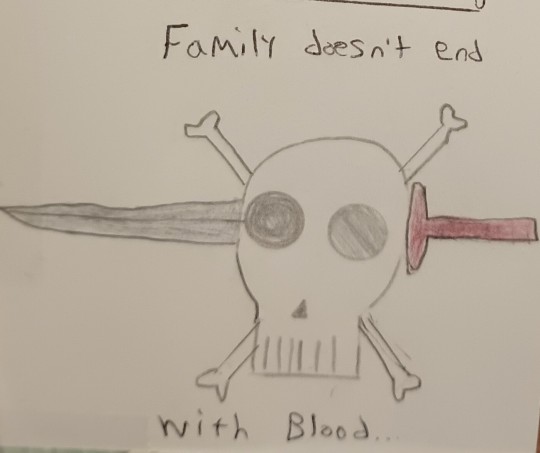
(Crew Tryouts Poster):
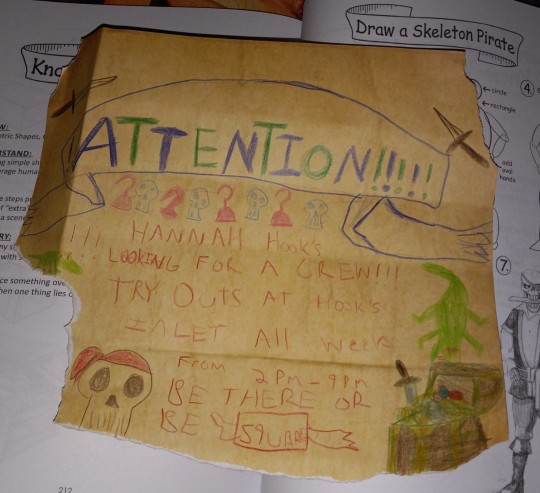
#disney#melissa de la cruz#disney descendants#descendants#wicked world#descendants au#disney descendants au#disney descendants alternate universe#disney descendants ocs#pirates#original pirate ships#my art#my sketches#etc
14 notes
·
View notes
Text
The Spectacular Spider-Men #3 Review
The Spectacular Spider-Men #3 Review #TheSpectacularSpiderMen #SpectacularSpiderMen #MARVEL #marvelcomics #comics #comicbooks #news #mcu #art #info #NCBD #comicbooknews #previews #reviews #spiderman #Amazon #peterparker #asm #amazingspiderman
Writer: Greg Weisman
Penciler: Humberto Ramos
Inker: Victor Olazaba
Colorist: Edgar Delgado
Letterer: Joe Caramagna
Cover Artists: Humberto Ramos & Edgar Delgado; Derrick Chew; Lee Garbett & Yen Nitro; Stephen Segovia
Publisher: Marvel
Price: $3.99
Release Date: May 22, 2024
Miles is dating Kamala Khan. Peter and Gwen are married with children, but Aunt May and George Stacy are going out on the…

View On WordPress
#Marvel#Marvel Comics#marvel comics reviews#marvel reviews#Miles Morales: Spider-Man#Reviews#Spider-Man#The Spectacular Spider-Men#The Spectacular Spider-Men 3#The Spectacular Spider-Men 3 Review
2 notes
·
View notes
Text

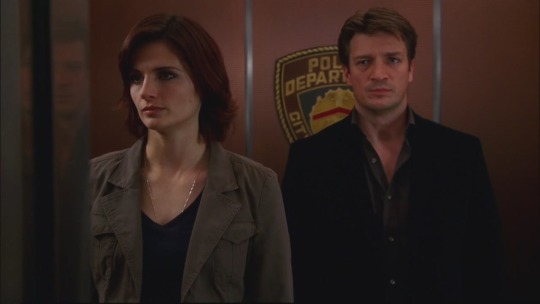
Title: Void
WC: 1500
Kate Beckett: “That’s not a problem, is it?
Richard Castle: “No. Not for me.”
—A Death in the Family (1 x 10)
There’s no violence in the end. There is no shouting or punches thrown. There are no tears—not that he expected them—but there is no kind of passion at all. She listens, stone faced and silent, to the facts he lays out in just a few, uncharacteristically dry words. She turns on her heels, spine straight and head held high. She walks away without hesitation or backward glance. In the end, there are no fireworks at all. It feels wrong—the manner of it, not just the fact of it. That feels far worse than wrong.
He is worried about her. It is immediate and gnawing and he is knocked off the axis of his entire self by it. Richard Castle, in the aftermath of a series of events like this, should be indignant. He was trying to help. He did help. He has achieved the first break in her mother’s case in a decade. He has accomplished what she could not see through, and she has walked away without so much as acknowledging that.
He deserves an opportunity to tell her that the ends justify that means, that she never actually forbade him from looking into the case until after he’d already looked into it. She owes him a chance to wave Doctor Death’s file high in the air and crow that it’s his particular brand of gumption, his charming lack of boundaries that clearly gets things done.
Richard Castle, in the aftermath of a series of events like this, should be furious at how impossible she is. He should be brooding into his scotch over how unappreciated he is or maybe ranting about her over some chest-thumping bass to a friend, to a random groupie or a woman who’s never heard of him but knows a good thing when she spies him brooding into his scotch.
Richard Castle, in the aftermath of a series of events like this, should be feeling sorry for himself, because he’s finally found something like a sense of purpose and now it’s been cruelly snatched from him. Because he’d hit on something to carry him not just beyond the post–Derrick Storm crisis, but the crisis of his daughter growing up, his mother settling into his home for the foreseeable future. He should be full of self-pity for all he has lost, and all of it for no real sin.
Any or all of these represent the self-righteous, self-indulgent, self-centered head space that all previous data indicate that Richard Castle should be in. But none of that is on his mind. None of that is what he finds himself going through.
He is worried about her.
It’s her haunting invocation of addiction—of the drink the recovering alcoholic must not take. He hadn’t thought of that. She’d told him that night. She’d opened not one, but two veins, telling him about the watch, fishing the ring out from the recesses of her shirt. He’d seized on one and disregarded the other entirely. Trauma-induced addiction? How cliché, how irrelevant, how unsexy.
And how . . . intractable.
What a tedious thing for a would-be superhero. Solve her mother’s case? Obviously and with the greatest of ease. Support her—as needed, as wanted—as the daughter who’d clearly taken on her father’s sobriety as her own responsibility? Yawn.
He’d like to be disgusted with himself for that. The temptation to wallow in that inexcusable failure is almost as overwhelming as the temptation to be furious with her or feel abjectly sorry for himself. But there’s no space inside him for even self-loathing. He is worried about her.
Everything he has not been seeing—everything he has chosen not to see—comes into sharp focus now. The dates on the access form stuck to the outside of the mostly empty box housing the pathetic sum total of the evidence gathered all those years ago, and how frequently her name showed up on row after row, then nothing . . . all of a sudden, absolutely nothing. The Herculean effort he’s seen her make, over and over, with the loved ones of victims: JoAnne Delgado, Courtney Morantz—people whose names he’s already forgotten that he knows she’ll never forget. He has watched the pain is causes her to access that empathy, and he’s watched her do it nonetheless.
He knows now how akin that must be—every time—to slipping on to barstool and ordering a soda, buying a bottle and sliding it into the back of the cabinet. He knows now how tight a hold she must keep on herself to do her job in a way that she can live with. And he’s just knocked her off the axis of who she is.
He’d like to hate himself. If he can’t stomp his feet over how unfair it is that she won’t fall at his feet for his heroic detective work or think about his needs, he’d at least like to embrace the drama of what a villain he is. But he’s worried about her.
It’s more than just the idea of addiction, whether falling off the investigative wagon and restring herself is a metaphor, an imminent reality, or something in between, it’s more than just that.
She makes herself small. She is such a force that the idea seems absurd, but it’s true nonetheless. She is in control of her professional life, absolutely, and in that context, she takes up her full complement of space. But outside of that world, she is shoulders hunched, elbows in, gaze fixed on the tile, the carpet, the gum-speckled sidewalk. She makes no demands of the world. She expects so very little of it.
He thinks of two moments—ancient and recent—that convince him of this. Their first case, when she leaned in, her breath hot on his skin, and whispered you have no idea. Their last case but one, when the fact of Will Sorenson had lit a fire under him and he’d finally plucked up the courage to ask her out for a drink, and she’d turned him down flat, declaring she had a date. He sees both for the performances they are. She’s a gifted actress. She is an expert at mining memory, but memory is all they are. They are drawn from a time before made herself small—made herself satisfied by wanting so little.
And she makes herself lonely.
She is close, after a fashion, with the boys, with Lanie, with Montgomery. And yet each of them has, a dozen times over in just a few short months, looked to him, pleadingly, to draw her out, to reason with her, to help, because they love her. They admire and respect her—and, yes, there’s more than a little healthy fear of her, too. But most importantly, they love this woman who is astonishingly hard on herself, who is dedicated to a fault, who is walled off, even from them. They love her, and she is lonely.
And since he has been around, she’s been . . . less so.
He has been good for her. Of all the miserable, uncomfortable ruminations that he’s been through since she walked away down that hospital corridor, this may be the worst. It may be the one that shakes him to his very core, but he has been good for her in his childish, boundary-less Kool-Aid Man fashion. She has not—could never—trained him not to approach her on certain fronts, and approach, he has. And in so doing he’s coaxed her out into the light, a little. At least a little.
He, master of the left-handed compliment that he is, has congratulated her on working people, handling them, running the convenient con. For her part, she has told him in no uncertain terms that she is simply being honest. But she has also stood taller in doing so. She has settled into herself and breathed her way into more of the world’s real estate beyond the job as he has fumblingly made her see how remarkable it is, the degree to which she unthinkingly gives of herself to lessen the pain of others. He has watched her come into a sense of her own worth. He has seen it dawn on her that she has a right to ask more of him, more of life, more of the world.
He deserves no credit for it. He certainly never had any intention of doing anyone but himself any good as he’s pulled strings and knocked over anything in his way. But the paradoxically uncomfortable truth is that he has done her a kind of precarious good.
And now he’s taken that from her. He’s taken so much from her that it would be a blessed relief to simply feel guilty. But he doesn’t have that luxury. There is a weight in knowing he has meant something to her. The responsibility of it weighs heavily on a part of his soul he’d thought long dead.
He’s worried about her.
He is so very worried.
A/N: This is 1497 words to support a lame Kool-Aid Man reference.
images via homeofthenutty
#Castle#Caskett#CastleABC#Castle: Season 1#Castle: A Death in the Family#Castle: 1 x 10#Kate Beckett#Richard Castle#Martha Rodgers#Lanie Paries#Johanna Beckett#Roy Montgomery#Kevin Ryan#Javier Esposito#Jim Beckett#Will Sorenson#Alexis Castle#Fic#Fanfic#Fanfiction#Fan Fic#Fan Fiction#Writing#Fabrications
26 notes
·
View notes
Text
All that glitters is not gold - The realities behind the image/story/object (a real life aspect): Canal 5 Mexico, Al servicio de la communidad (At the service of the community) and missing person Selene Delgado Lopez - By RPG.
youtube
(Above) Segment from Canal 5's "Al servicio de la communidad", airing to provide insight on missing people from various areas in Mexico throughout the early 1990s until the 2000's.
A notable name in this broadcast was one 18 year old "Selene Delgado Lopez", a woman who had apparently disappeared from Delegation "Alvaro Obregon" (District "Alvaro Obregon") on the 22nd of April sometime 30 years ago.
The case of Selene interested the minds of true crime enthusiasts, and those willing to find missing people in a heartbeat; though with endless researching and outreach, there were no leads or any proof that she had even existed in the first place. People in Mexico started to make up theories that she was kidnapped and used in human trafficking, but without any proof their claims came to no avail.
Selene's missing persons case soon started to dissolve into a mystery, and as time went past more and more people started to conclude that she was either dead or hadn't existed and that it was just a PR stunt made by Canal 5. Theories of her disappearance, and the involvement of organised crime came after a slew of other high profile cases sprung up in Mexico involving missing women and girls; who had succumbed to unimaginable fates. A note, and fact, to make about Central and South America is that countries in that region are a hotbed for crimes related to the exploitation of women; for example, Honduras and El Salvador to this day hold the highest rates of Femicide (honour killings involving the "sacrifice" of women to apparently "stop misfortune within the family")...and the sad thing is that cases like these aren't usually concluded due to the influx in police corruption and extortion.
In 2020, the case was amplified again; with people announcing that the apparent missing girl was found alive, and rumours of a social media account began to show up. An account called "Selene Delgado" began to be shared around to people with a warning attached, stating that this person was "friends with many people on Facebook" and that there was no way to block her; turning out to all be a huge hoax to scaremonger those gullible enough to believe it.
September 2nd 2021. Youtuber "FlorecitaDreams" uploads a video of themselves attempting to disseminate the likeliness of her even being a real person by using photographic evidence and advanced software to prove that it was just a collage of pictures put together. Doing this, they collated the supposed picture of Selene Delgado Lopez and the Baton Rouge killer Derrick Todd Lee:
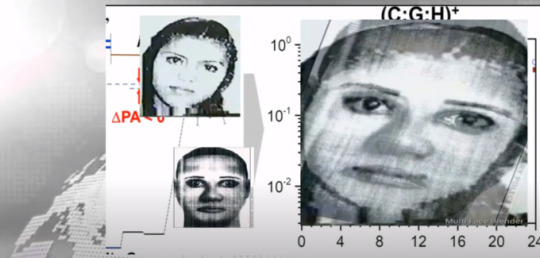
A note: The picture of Derrick Todd Lee is a computer rendered E-Fit of the murderer and not an actual photo of Derrick.
E-Fits are superimposed images made by collating various facial features often given in witness testimonies to make a somewhat over-exaggerated face; faces are made exaggerated for one sole reason, so that they are recognisable even by identifying someone based on one facial feature. E-Fits are commonplace in use in both criminal cases, trying to catch a murderer or unidentified suspect, or in hopes of identifying a unidentified corpse (in this case, laboratories like FACES Lab will use exhumed skulls and 3d imaging software to produce a look-a-like to what their facial structure might have been; this of course depends on the severity of structural damage to the body part).
With this investigation done by FlorecitaDreams, they made the argument that the Selene Delgado Lopez face was just a manipulation of Derrick Todd Lee's; going over sophisticated mathematical explanations just to try and prove that the face wasn't real in the first place.

FlorecitaDreams uses a graph make-up to show the likeliness and familiarity between inanimate and unrealistic beings to a healthy human. It goes into extensive depth exposing whether or not the being in question accentuates movement like a human does.
As a summary, the case still remains unsolved; though multiple sources have attempted to debunk potential fallacies to do with both the missing persons case itself and the rumors around it. Its illusive to whether or not the person existed, or if they were just a figure of someone's oddly creative
RPG-7
0 notes
Text
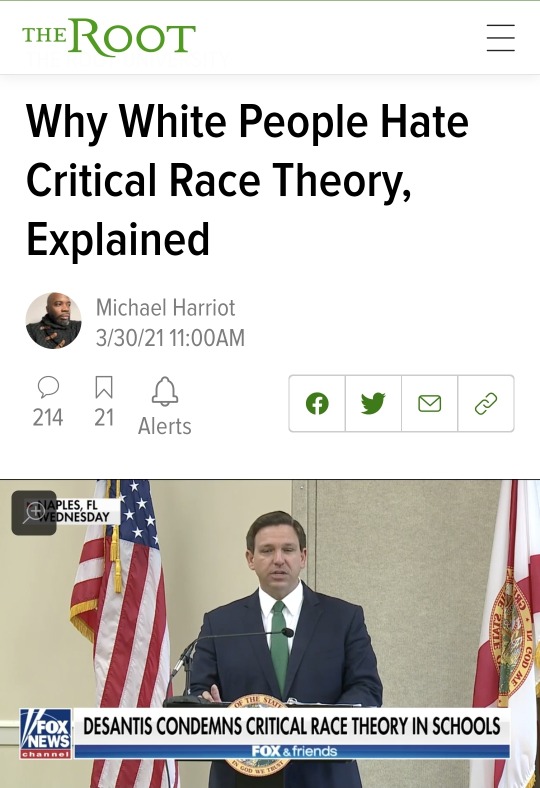
What is Critical Race Theory?
Basically, Critical Race Theory is a way of using race as a lens through which one can critically examine social structures. While initially used to study law, like most critical theory, it emerged as a lens through which one could understand and change politics, economics and society as a whole. Richard Delgado and Jean Stefancic’s book, Critical Race Theory: An Introduction, describes the movement as: “a collection of activists and scholars engaged in studying and transforming the relationship among race, racism, and power.”
Kimberlé Crenshaw, one of the founding members of the movement, says Critical Race Theory is more than just a collective group. She calls it: “a practice—a way of seeing how the fiction of race has been transformed into concrete racial inequities.”
It’s much more complex than that, which is why there’s an entire book about it.
Can you put it in layman’s terms?
Sure.
Former economics professor (he prefers the term “wypipologist”) Michael Harriot, who used Critical Race Theory to teach “Race as an Economic Construct,” explained it this way:
Race is just some shit white people made up.
Nearly all biologists, geneticists and social scientists agree that there is no biological, genetic or scientific foundation for race. But, just because we recognize the lack of a scientific basis for race doesn’t mean that it is not real. Most societies are organized around agreed-upon principles and values that smart people call “social constructs.” It’s why Queen Elizabeth gets to live in a castle and why gold is more valuable than iron pyrite. Constitutions, laws, political parties, and even the value of currency are all real and they’re shit people made up.
To effectively understand anything we have to understand its history and what necessitated its existence. Becoming a lawyer requires learning about legal theory and “Constitutional Law.” A complete understanding of economics include the laws of supply and demand, why certain metals are considered “precious,” or why paper money has value. But we can’t do that without critically interrogating who made these constructs and who benefitted from them.
One can’t understand the political, economic and social structure of America without understanding the Constitution. And it is impossible to understand the Constitution without acknowledging that it was devised by 39 white men, 25 of whom were slave owners. Therefore, any reasonable understanding of America begins with the critical examination of the impact of race and slavery on the political, economic and social structure of this country.
That’s what Critical Race Theory does.
How does CRT do that?
It begins with the acknowledgment that the American society’s foundational structure serves the needs of the dominant society. Because this structure benefits the members of the dominant society, they are resistant to eradicating or changing it, and this resistance makes this structural inequality.
Critical Race Theory also insists that a neutral, “color-blind” policy is not the way to eliminate America’s racial caste system. And, unlike many other social theories, CRT is an activist movement, which means it doesn’t just seek to understand racial hierarchies, it also seeks to eliminate them.
How would CRT eliminate that? By blaming white people?
This is the crazy part. It’s not about blaming anyone.
Instead of the idiotic concept of colorblindness, CRT says that a comprehensive understanding of any aspect of American society requires an appreciation of the complex and intricate consequences of systemic inequality. And, according to CRT, this approach should inform policy decisions, legislation and every other element in society.
Take something as simple as college admission, for instance. People who “don’t see color” insist that we should only use neutral, merit-based metrics such as SAT scores and grades. However, Critical Race Theory acknowledges that SAT scores are influenced by socioeconomic status, access to resources and school quality. It suggests that colleges can’t accurately judge a student’s ability to succeed unless they consider the effects of the racial wealth gap, redlining, and race-based school inequality. Without this kind of holistic approach, admissions assessments will always favor white people.
CRT doesn’t just say this is racist, it explains why these kinds of race-neutral assessments are bad at assessing things.
What’s wrong with that?
Remember all that stuff I said the “material needs of the dominant society?” Well, “dominant society” means “white people.” And when I talked about “racial hierarchies,” that meant “racism.” So, according to Critical Race Theory, not only is racism an ordinary social construct that benefits white people, but it is so ordinary that white people can easily pretend it doesn’t exist. Furthermore, white people who refuse to acknowledge and dismantle this unremarkable, racist status quo are complicit in racism because, again, they are the beneficiaries of racism.
But, because white people believe racism means screaming the n-word or burning crosses on lawns, the idea that someone can be racist by doing absolutely nothing is very triggering. Let’s use our previous example of the college admissions system.
White people’s kids are more likely to get into college using a racist admissions system. But the system has been around so long that it has become ordinary. So ordinary, in fact, that we actually think SAT scores mean shit. And white people uphold the racist college admissions system—not because they don’t want Black kids to go to college—because they don’t want to change admission policies that benefit white kids.
Is that why they hate Critical Race Theory?
Nah. They don’t know what it is.
Whenever words “white people” or “racism” are even whispered, Caucasian Americans lose their ability to hear anything else. If America is indeed the greatest country in the world, then any criticism of their beloved nation is considered a personal attack—especially if the criticism comes from someone who is not white.
They are fine with moving toward a “more perfect union” or the charge to “make America great again.” But an entire field of Black scholarship based on the idea that their sweet land of liberty is inherently racist is too much for them to handle.
However, if someone is complicit in upholding a racist policy—for whatever reason—then they are complicit in racism. And if an entire country’s resistance to change—for whatever reason —creates more racism, then “racist” is the only way to accurately describe that society.
If they don’t know what it is, then how can they criticize it?
Have you met white people?
When has not knowing stuff ever stopped them from criticizing anything? They still think Colin Kaepernick was protesting the anthem, the military and the flag. They believe Black Lives Matter means white lives don’t. There aren’t any relevant criticisms other than they don’t like the word “racism” and “white people” anywhere near each other.
People like Ron DeSantis and Tom Cotton call it “cultural Marxism,” which is a historical dog whistle thrown at the civil rights movement, the Black Power movement and even the anti-lynching movement after World War I. They also criticize CRT’s basic use of personal narratives, insisting that a real academic analysis can’t be based on individually subjective stories.
Why wouldn’t that be a valid criticism?
Well, aren’t most social constructs centered in narrative structures? In law school, they refer to these individual stories as “legal precedent.” In psychology, examining a personal story is called “psychoanalysis.” In history, they call it...well, history. Narratives are the basis for every religious, political or social institution.
I wish there was a better example of an institution or document built around a singular narrative. It would change the entire constitution of this argument—but sadly, I can’t do it.
Jesus Christ, I wish I could think of one! That would be biblical!
Why do they say Critical Race Theory is not what Martin Luther King Jr. would have wanted?
You mean the Martin Luther King Jr. who conservatives also called divisive, race-baiting, anti-American and Marxist? The one whose work CRT is partially built upon? The King whose words the founders of Critical Race Theory warned would be “co-opted by rampant, in-your-face conservatism?” The MLK whose “content of their character” white people love to quote?
Martin Luther King Jr. literally encapsulated CRT by saying:
In their relations with Negroes, white people discovered that they had rejected the very center of their own ethical professions. They could not face the triumph of their lesser instincts and simultaneously have peace within. And so, to gain it, they rationalized—insisting that the unfortunate Negro, being less than human, deserved and even enjoyed second class status.
They argued that his inferior social, economic and political position was good for him. He was incapable of advancing beyond a fixed position and would therefore be happier if encouraged not to attempt the impossible. He is subjugated by a superior people with an advanced way of life. The “master race” will be able to civilize him to a limited degree, if only he will be true to his inferior nature and stay in his place.
White men soon came to forget that the Southern social culture and all its institutions had been organized to perpetuate this rationalization. They observed a caste system and quickly were conditioned to believe that its social results, which they had created, actually reflected the Negro’s innate and true nature.
That guy?
I have no idea.
Will white people ever accept Critical Race Theory?
Yes, one day I hope that Critical Race Theory will be totally disproven.
Wait...why?
Well, history cannot be erased. Truth can never become fiction. But there is a way for white people to disprove this notion.
Derrick Bell, who is considered to be the father of Critical Race Theory, notes that the people who benefit from racism have little incentive to eradicate it. Or, as Martin Luther King Jr. said: “We must also realize that privileged groups never give up their privileges voluntarily.”
So, if white people stopped being racist, then the whole thing falls apart!
From your lips to God’s ears.
164 notes
·
View notes
Photo
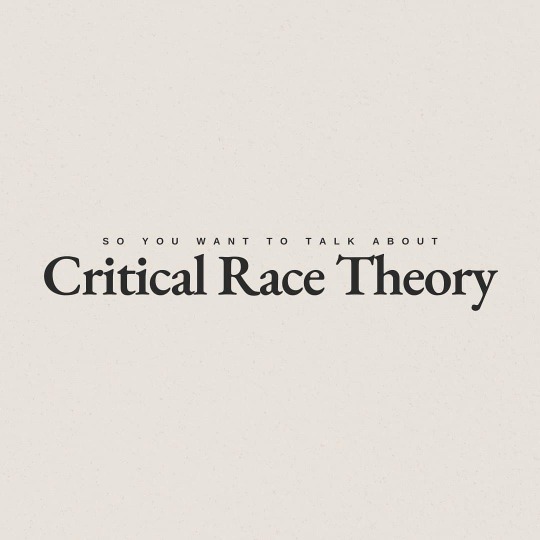



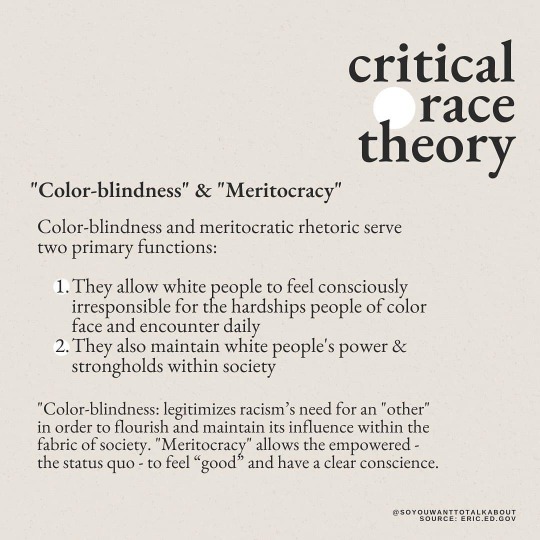

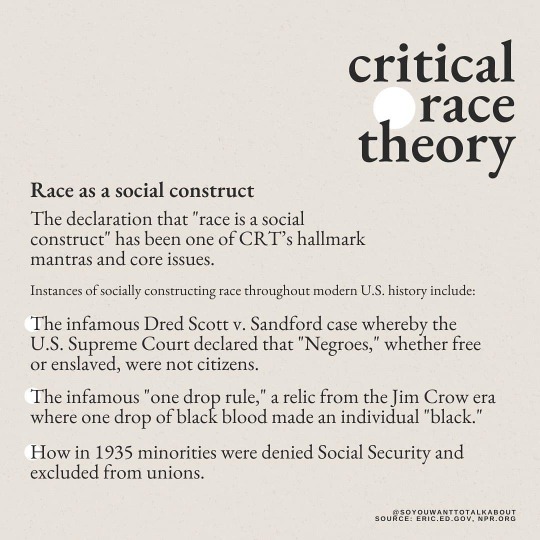

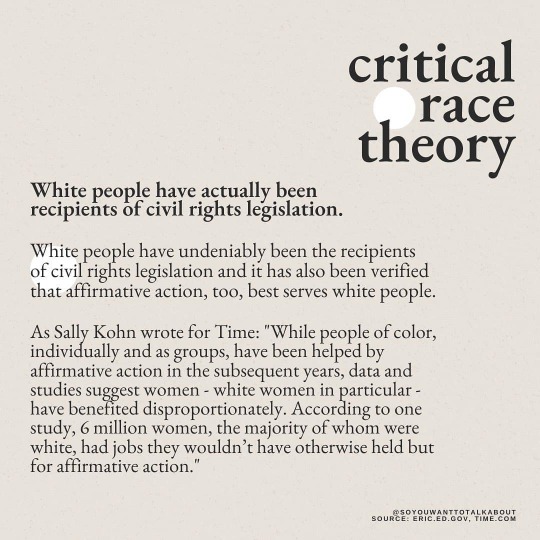
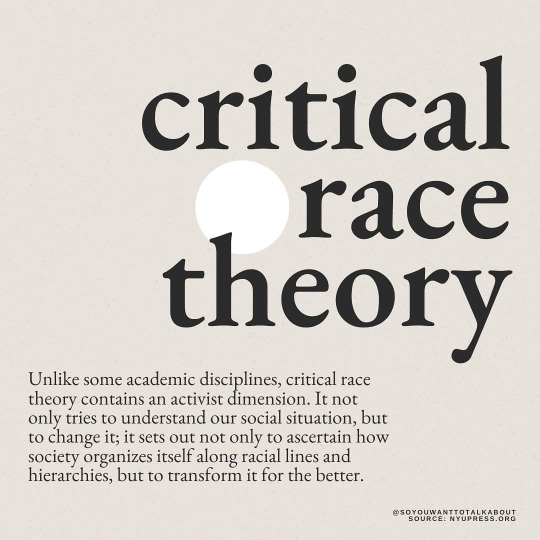
So You Want to Talk about Critical Race Theory
The Trump administration has instructed federal agencies to end racial sensitivity trainings that address topics like white privilege and critical race theory, calling them "divisive, anti-American propaganda."
Let's talk.
Critical Race Theory, or CRT, is a theoretical and interpretive mode that examines the appearance of race and racism across dominant cultural modes of expression. In adopting this approach, CRT scholars attempt to understand how victims of systemic racism are affected by cultural perceptions of race and how they are able to represent themselves to coujnter prejudice.
CRT originated among legal scholars such as Derrick Bell, Kimberle Crenshaw, and Richard Delgado, who arbued that racism and white supremacy are engrained in the fabric of American society.
CRT identifies that the power structures in this country are based on white privilege and white supremacy, whcih perpetuates the marginalization of people of color.
There are five major components or tenets of CRT:
1. The notion that racism is ordinary and not aberrational
2. Tbe idea of an interest convergence
3. The social construction of race
4. The idea of storytelling and ounter-storytelling
5. The notion that whites have actually been recipients of civil rights legislation
"Color-blindness" & "Meritocracy"
Color-blindness and meritocratic rhetoric serve two primary functions:
1. They allow white people to feel consciously irresponsible for the hardships people of color face and encounter daily
2. They also maintain white people's power & strongholds within society.
"Color-blindness: legitimizes racism's need for an 'other' in order to flourish and maintain its influence within the fabric of society. 'Meritocracy' allows the empowered--the status quo--to feel 'good' and have a clear conscience."
Interest Convergence:
Interest convergence is the notion that white people will allow and support racial justice & progress to the extent that there is something positive in it for them, or a 'convergence' between the interests of whites and BIPOC.
Derrick Bell wrote that the interests of Black civil rights coincided for a brief time with the interests of white elites, thus enabling a decision that benefited the interests of Black people. In Bell's (1980) words, "the interests of Blacks in achieving racial equality will be accommodated ony when it converges with the interests of whites."
*Interest convergence is a theory coined by the late Derrick Bell, law professor and spiritual godfather to the field of study known as critical theory.
Race as a social construct
The declaration that "race is a social construct" has been one of CRT's hallmark mantras and core issues.
Instances of socially constructing race throughout modern U.S. history include:
The infamous Dred Scott v. Sandford case whereby the U.S. Supreme Court declared that "Negroes," whether free or enslaved, were not citizens.
The infamous "one drop rule," a relic from the Jim Crow era where one drop of black blood made an individual "black."
How in 1935 minorities were denied Social Security and excluded from unions.
"Counter-storytelling"
Critical race theorists argue that counter-storytelling, as a method of telling the stories of those people whose experiences are not often told may be a useful mechanism to challenge and change racial dominance.
Counter-stories can help promote social justice by putting a human face to the experiences of often-marginalized groups. This promotes their sense of social, policital and cultural cohension and teaches others about their social realities.
White people have actually been recipients of civil rights legislation.
White people have undeniably been the recipients of civil rights legislation and it has also been verified that affirmative action, too, best serves white people.
As Sally Kohn wrote for Time: "While people of color, individually and as groups, have been helped by affirmative action in the susequent years, data and studies suggest women--white women in particular--have benefited disproportionately. According to one study, 6 million women, the majority of whom were white, had jobs they wouldn't have otherwise held but for affirmative action."
Unlike some academic disciplines, critical race theory contains an activist dimension. It not only tries to understand our social situation, but to change it; it sets out not only to ascertain how society organizes itself along racial lines and hierarchies, but to transformm it for the better.
Source: @SOYOUWANTTOTALKABOUT / Purdue.edu / UCLA School of Public Affairs / NPR.org / eric.ed.gov / Cuny.edu / leeds.ac.uk / Time.com
97 notes
·
View notes
Text
notable moments from The Bank Shot Job
leverage 1.05
I decided I’m also going to start highlighting meta material in these posts for reference reasons (like for fics, headcanons, meta, etc)
I’m colorcoading by what character the meta pertains to btw
Clerk: Hello, Judge Roy.
Judge Roy: [slaps her ass] Hey, sweetheart.
Frank: Can I help you, your honor?
Judge Roy: Yes, Fred. Her phone number?
Frank: It's Frank. And she's 19, sir.
Judge Roy: That's too bad. She got a younger sister
diSgUsTiNG
- - - - -
Hardison: No. No more. We gotta talk to Nate. No more rip deals. They take too damn long.
Parker (ripping paper): That's why they're called "Rip Deals". You have to convince them they're getting a deal before you can rip them off.
Hardison: Two weeks. Two weeks sleeping in crappy hotels. Two weeks eating in crappy diners. Two weeks having my soul sucked dry. It's 107 degrees. Who lives where it's 107 degrees?
Parker: Juan's not so bad. I kinda like this town
I wanna see that domestic shit of them sharing hotel rooms and eating the continental breakfasts and dingy diners and everything about them living in rundown hotels for two weeks
- - - - -
Hardison: You know, I had to retask two satellites just to get a lousy internet connection. Took more than an hour to torrent the last episode of Doctor Who.
Parker: Hey! Illegal downloading's wrong. (lights paper on fire in trash can)
that’s it. that’s their relationship.
- - - - -
Hardison: How we coming on the breakdown?
Eliot (loading truck elsewhere): Fake addresses are shut down. Post office boxes are closed. The phones are cleared. Five more minutes, we never existed
bruh those props ??? I wish I had a screenshot but wtf where they DOING for the con ???
- - - - -
Hardison: Want me to call the Delgado family, tell them the news?
Eliot: Nah. Soon as I clear county line I want to do it. I just wish we could do more than bankrupt that corrupt son of a bitch
eliot is so good you guys im-
- - - - -
Nate: Get out. Now.
Hardison: Is he talking to us?
Parker: An unmarked van parked across the street from a bank that's being robbed? Yeah. I think he's talking to us.
Hardison: Yeah, well, five more feet and he would have been in the clear. What the hell was he thinking?
Parker: Don't be an idiot, Hardison.
Hardison: What?
Parker: Sophie was still in there
parker knows nate loves sophie and would never leave her behind because she may not always get people, but even she can see how much nate cares for sophie
- - - - -
Derrick: Everyone empty your pockets. Wallets, purses, watches, everything you've got, throw it over here.
(everyone throwing stuff to center of floor)
nate threw his fucking toothpick
- - - - -
Deputy Arnold: No, right here, right here, and we need ...
(Eliot crosses police line)
Deputy Arnold: Whoa, whoa, I need you to take a step back, sir.
Eliot: Tell me what's going on in there.
Deputy Arnold: I'm afraid I can't do that, this is an active crime scene, and you need to ...
Eliot: (to cop) I'm not talking to you. (to Nate) How many are there?
Nate: Yeah, you're right. Clearly amateurs, these two. Yeah. The younger one, looks like he's never handled a gun before.
Eliot: Is judge blow-hard next to you?
Nate: Yeah, uh-huh. Yeah, definitely amateurs, That's what makes them so dangerous.
Eliot: Alright, 2 guys, both armed, neither one a criminal mastermind. You want me in there?
Deputy Arnold: Sir, we can't have you going inside the bank ...
Nate: Probably, uh, a good idea just to sit tight, don't you think? You know, and see where these guys' heads are
at, you know?
Eliot (backing away): Alright, your call boss.
Deputy Arnold: Thank you
poor deputy arnold + eliot being done with local law enforcement
- - - - -
Sophie: Okay. So what is the plan, Stan
“what’s the plan, stan” adorable.
- - - - -
(Eliot leans against a building across the street and watches Hardison and Parker pull up in a sedan)
Eliot: Nice ride.
Parker (taking notebook and removing badges): It's embarrassing. Everyone knows you don't rob a bank without an exit strategy. These two deserve to get caught. 42 seconds. (tosses notebook back to Eliot)
Hardison: What?
Parker: To rob this bank. One security guard who has never fired his gun before, 2 closed-circiut cameras outside, 1 inside, and a Glen-Reader safe built in the 50's whose default combination is the birth date of the manager's wife! Get in, get out, 42 seconds.
Hardison: Seriously
parker was so angry that she chucked the binder at eliot and he was like ??? we good ???
- - - - -
Hardison: Seriously? (to Bill) I'm Agent Leonard. This is Agent Elmore. We'll be taking over this crime scene,
Sheriff ...
Bill: Bill Hastings. Nice to meet you. You guys sure are quick, just called this in 20 minutes ago.
Hardison: Well, we were coming back from a little border skirmish. Patrol unit came under attack from a pack of Chupacabras.
Bill: Chupacabras? I thought those things were urban legend.
Hardison: You're adorable
I love it when hardison fucks with people it’s hilarious
- - - - -
Hardison: Whoa, what's going on?
Bill: Cut power to the bank. Standard operating procedure.
Hardison: Standard ... it's standard op ... it's standard? Where do you getting that bull-hockey from son?
Bill: Deputy Arnold, he took a seminar in crisis management last year.
Deputy Arnold: It was an online seminar. We got certificates.
Hardison: Certificates? Magic kits come with certificates. Does that make it cool for kids to saw their parents in half?
Bill: We're just going by the book.
Hardison: The ... the book? The book got a good man killed. I can't ... my blood pressure.
Parker: Ex-partner. Probably shouldn't mention the book again. Or propellers.
parker is doing so well with grifting considering and I’m so proud of her
- - - - -
Sophie: They are not cops, I promise you, they're friends of mine, you can trust them.
Derrick: Why should I trust you? I don't know who you are.
Sophie: I am a thief.
Derrick: Okay, I'm not sure what to do with that.
that’s it guys. that’s the show.
- - - - -
Nate: I didn't say it was going to be easy. But nothing's impossible, especially when you have the world's greatest thief on your payroll. Parker, have you ever robbed a bank that's being robbed?
Parker: There's a first time for everything.
her SMILE YOUR HONOR
- - - - -
Parker: The bank was built before 1980, before computers. Means it's got a larger than normal night deposit chute.
Hardison: 'Cause business had to drop off ledgers with their daily hauls. What, you thought my genius was only limited to ones and zeroes?
Parker: I'm thinking the chute's my way in. Only problem is, it's in the alley on this side of the building
the way she looks at hardison like damn boy you know my stuff
- - - - -
Hardison: I can take care of that, but, we actually have bigger problems.
Eliot: What's that?
Hardison: Well, Sheriff Coltrane over here called the FBI, the real FBI. Now the closes office is in San Diego, so they should be here, in about, um, give it 45 minutes.
Nate: We can't worry about that now.
Hardison: When do we worry about it?
Nate: In about 45 minutes
hardison, internally: lord give me strength
- - - - -
Hardison: Hold on ... Excuse me. (answers phone) Agent Leonard. We will do whatever you need us to do, just please, don't hurt anybody. Okay. (hangs up) Guys ... Boys, boys, come on, gather 'round. Now boys, that was THE call. The call we were waiting for. Now look, they have a list of demands. First off, they want 12 large pizzas. One cheese, one Hawaiian, extra pineapple. Two pepperoni and black olives, two meat lover's, t ... Seriously? Nobody's writing this down? Seriously? One triple-shot half-caf vanilla latte, tall,
(Parker goes down alley and opens deposit drop box)
Hardison: …three of the latest copies of the Hall and Oates CD. I know, right? Exciting stuff I didn't know they were coming out with a new one either. We're gonna need steaks. Steaks and a grill. They're trying to tailgate. Okay, they need your overalls, I don't know why. They need some kibbles n' bits, we need an Etch-A-Sketch, somebody in there likes to squiggle okay ... Are we good? Let's go people. Everybody. I need you guys moving. Everybody get out. Go. (hardison points at an officer) You stay. We need to talk about Hall & Oates.
I fucking loved this monologue,,, hardison is VERY GOOD at improvising
- - - - -
(Derrick opens night deposit box)
Parker: Hi.
Derrick (hands her the briefcase): There's a lot of money in there.
Parker: Yeah, I know.
Derrick: My wife's life depends on that money getting where it needs to go.
Parker: I understand. Sometimes bad guys are the only good guys you get
parker’s face softened and you can see that she understood. parker didn’t get people in the beginning of the show, and sure her values and ideas aren’t typical, but she was ALWAYS a good person. she cared and understood what was at risk and she consoled him.
also, this is yet another piece of evidence that parker was the main character all along!!! I’m not gonna go super into it because there are already posts out there about it, but she had three (3) episodes dedicated to her character in season one alone AND had her say what is basically the mission statement of the show here in this scene
- - - - -
Sophie: Things could be worse.
Nate: Worse than me getting shot and you blowing our cover?
Sophie: No, no, you're not gonna lay that crap on me. We wouldn't even be in this mess if you'd just walked out with the cash when you had the chance. I would've been fine.
Nate: I know.
Sophie: Yeah, I can take care of myself. I've been doing it a long time. Since way before I met you. I'm just saying.
Nate: Yeah, you're right.
Sophie: Okay
nate knows sophie is a strong independent woman and that is one of the only things I stan about him lol
- - - - -
Sophie: We lost communication.
Nate: Yeah, we did.
Sophie: Hardison, Parker, and Eliot ...
Nate: That's right, they are on their own. Yup.
they ended up doing great on their own, but also, can we acknowledge what a glow up it was building up to the rundown job ???
- - - - -
(Mom gets out of truck and tries to run)
Meth #2: Where the hell you think you're going, old lady? (pulls mom back) Where the hell you think you're g ...
Eliot (catches Meth #2’s arm): Hey, what smells like crank and screams like a girl? (Takes his gun and breaks his knee)
Meth #2: AAHH!
Eliot (kicks car door closed before Meth #3 can get out, empties the bullets from gun): That's the right answer. (throws gun into car at #3, hits #1 as he approaches) Come on. (fights #1, kicks door shut, beats #1 more, kicks door again) Stay in the car. (beats the hell out of #3 and #1, kneels down near mom and removes her gag)
Mom: Who are you?
Eliot: Well ma'am, we'd be the cavalry.
this entire fight scene always has me ROLLING it’s so funny
also I’m not sure if this should go on the List Of Non-Weapon Objects Eliot Uses As Weapons but eliot DID use the car door in the fight
- - - - -
Sophie: Just let the paramedics take him. The rest of us will stay.
Judge Roy: And give up my leverage
*sophie and nate look at each other*
both, internally: tHATS OUR WORD
- - - - -
Nate: Hey, listen. She's gonna be alright. Everything's gonna be alright
Derrick: Your people ... they're good?
Nate: Yeah. The best.
nate’s smile when he says that??? proud dad alert
- - - - -
Sophie (looking at replay of tape): You're still a geek.
Judge Roy: They're trying to ruin me.
Hardison: Geek power, baby. Stay strong!
in other words: age of the geek, baby
also- kudos to 2008 hardison editing video like that. I can’t do that shit with today’s tech lmao
- - - - -
Bill: Go home now. Bank robbers are in custody, hostages are safe. FBI's got the whole thing wrapped up.
Taggert: Do you have any idea what?
Mcsweeten: Just go with it.
Deputy Arnold: Mr. FBI guys, can you help me here?
Bill: My, my. Look at this. Our local drug boys, both with outstanding warrants. It's incredible.
Taggert: Damn, we're good!
mcsweeten and taggert stumbling onto the leverage crew’s cons and directly profiting off of them is iconic. they have no idea. too pure for this world
- - - - -
Sophie: Hey, thanks Parker.
Parker: Whatever.
Sophie: No. It was an excellent performance.
Parker: Yeah, I think I can act okay when I'm yelling at people and bossing them around.
Sophie: Well, it's a good start.
proud mom!sophie + grifting parker
Nate: Listen, we have to make sure we get the cash to the Delgado family. Ow!
Eliot (tending Nate’s wound): Oh! Settle down. You act like you've never been shot before.
Nate (glances at Sophie): So, uh, pizza boxes, huh?
Hardison: Yeah, I know, I know, You could have done better.
Nate: No, no, no. No I couldn't have.
eliot casually stitching up nate’s wound bc no hospitals but also can we talk about how much nate has to trust eliot to literally operate on him
+
nate giving praise to hardison ??? rare af I don’t know her
#leverage#the bank shot job#leverage 1.05#leverage 1x05#mine#notable moments#leverage season 1#season 1
188 notes
·
View notes
Text
Ranking the Masters:
This is a bit tricky because there's my favourite and my least favourite, but everything in between can easily shift around depending on my mood.
This is my own personal opinion and I try to respect everyone's opinion, even if it doesn't match mine.
1. Missy

2. Delgado

3. Simm

4. Jacobi

5. Ainley

6. Pratt
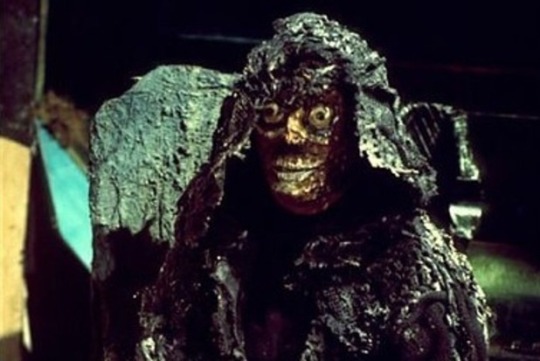
7. Beevers
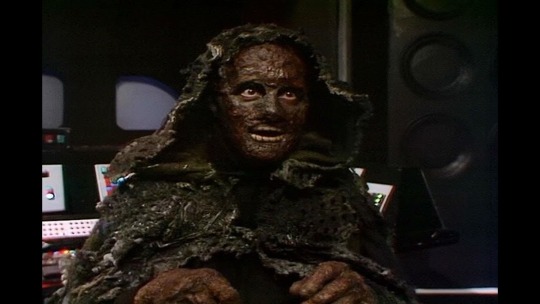
8. Roberts

9. Dhawan

Reasons:
1. Missy is fantastic. She's chaotic, she's evil, but she's really just trying to get her childhood friend back. I love her accent, as well as the various other accents she slips into from time to time. I also love the fact that she looks like Mary Poppins. Somehow, it just fits. Then there's her redemption arc. I love that they gave her that story line and we see how she changes to the point where she murders her past self so that he can become her and start on the journey that would allow her to stand with the Doctor. Of course, her past self is so horrified by this that he murders her. This would have been the perfect end to the character. Having them kill one another is the only way they'd really die and having her die for the Doctor, her best friend, would have been perfect.
2. I mean, Delgado's the original. He worked so well with the Third Doctor and I loved all his stories, even though they all went the same way. a) Teams up with a dangerous alien species. b) Invades the Earth. c) Tells the Doctor he intends to double-cross the alien species. d) Gets double-crossed by the alien species. e) Is surprised (Even though it happens every time). f) Teams up with the Doctor to defeat the alien species. g) Abandons the Doctor.
3. I really like Simm's Master. He was my first Master since Jacobi didn't really count. He was wonderfully mad and chaotic and I loved the idea that he was being driven mad by the drumming the Time Lords had placed in his head as a child. I loved seeing a calmer, but still chaotic version of him in Series 10 and he really worked well along side Missy.
4. I like Derrick Jacobi and seeing him as the Master is great. He didn't have much screen time but I've listened to one Big Finish audio with him and I really enjoyed it. I'd love to hear more, especially about his involvement in the Time War because he is the War Master.
5. Ainley is another great one. He had the longest run as the master and we got to see him fight against three versions of the Doctor, as well as One, Two, and Three in "The Five Doctors". He's quite similar to Delgado in many respects, but he's even more desperate to survive.
6. I've put Pratt next because . . . well, I'm not sure. I really liked him and I thought he had a great story. He's very creepy and it really works.
7. I've put Beevers after Pratt because I think that, as a Crispy Master, Pratt just looks better. However, Beevers also had a great story and I've heard a Big Finish audio that he was in end enjoyed that too.
8. I originally had Roberts above the Crispy Masters but I moved them after watching their episode again. I thought Roberts was a bit creepy and over the top, but it worked. He really worked well against Eight and I've heard a Big Finish audio he was in too. Even though I prefer a British accent to an American one, I think having him American really works.
9. Ah, Dhawan . . . He's the only Master I don't like. And I really don't like him. For one thing, he shouldn't exist. As I said above, Missy's death was the perfect end to the character. I don't mind the fact that there's no explanation as to how he's alive because we all know he has a habit of coming back from certain death, but I would like to know what happened with Missy's redemption arc. It should have at least been mentioned. I mean, the Doctor wasn't even shocked to find him evil again. Also, he was too evil and too mad. He's more insane than Simm's Master and that bothers me. The Master isn't insane. He's mad, but not insane. The only reason Simm!Master was insane was because of the drumming in his head. When we see him without it, he's not insane. But Dhawan!Master is and there's no reason for it so it just doesn't fit for his character.
Also, I don't like the fact that he destroyed Gallifrey for no reason since we already know the Time Lords are a bunch of liars, but I've already written a whole thing on why I think Gallifrey shouldn't have been destroyed again.
See my Doctor ranking.
79 notes
·
View notes
Text

Parents Push Back Against Right-Wing Attacks On ‘Critical Race Theory’
Danielle Atkinson recalls being outraged after learning about an incident that took place five years ago at Royal Oak Middle School located in suburban Detroit.
It occurred the day after former President Donald Trump’s win in November 2016. A group of Latino children were eating when white students began chanting at them, “Build the wall,” a popular anti-immigrant Trump slogan.
The incident resulted in some of the Latino
Atkinson, an African-American parent with children in the district, sees a parallel between the “build the wall” incident and the current right-wing attacks on discussions of racism and slavery in school, usually under the banner of “critical race theory” (CRT).
“CRT [attacks are] all about politics,” said Atkinson, who also is founding director of Mothering Justice. “It’s the same tool dressed up differently. The goal is to make white people afraid.”
CRT is a college-level concept that is more than four decades old and is not part of the K-12 curriculum in most Michigan schools. It centers on the idea that race is a social construct, asserting that racism is not only the product of individual bias or prejudice, but it is also something embedded in legal systems and policies.
It emerged out of a legal analysis framework in the late 1970s and early 1980s and was created by scholars Derrick Bell, Kimberlé Crenshaw, and Richard Delgado and others. It is generally taught at the college or university level.
There’s been a continued national push against CRT from Republicans and right-wing groups this year, which resonated with some white suburban voters and is credited with helping the party notch key victories in Virginia in this month’s statewide election. But there hasn’t been much media attention on the impact on Black students and parents. -(source: the 74)
DNA America
“it’s what we know, not what you want us to believe.”
#dna #dnaamerica #news #politics
0 notes
Text
Stormbringer Crew Species;
Aaron Bog (The Treasuer)= Demon-Human Hybrid.
Abi Hun (Crewmate)(Former)= Human.
Alex Aoratos-Sinclair (Helmsman)= Demigod.
Amira Bint Aladdin Bin Cassim Al Hamed of Agrabah (Translator)(Future)= Human.
Anna Bog (The Lawyer)= Demon-Human Hybrid.
Artemis Foundling (Junior)= (Thought To Be) Human With Severe Jaundice.
Athena Queen (The New Powder Monkey and Rigger)= Witch.
Atlas Foundling (Junior)(Future)= (Thought To Be) Changeling-Shapeshifter Hybrid.
Atticus Hook (Babysitter Crewmate)(Former)= Human.
Beau Foundling (Junior)= Human-Goblin-Troll Hybrid.
Clarisse Foundling (Junior)(Future)= Orge-Human Hybrid.
Craven Bog (Junior)(Future)= Demon-Human Hybrid.
Credence Foundling (Junior)= Centaurcorn.
D.E Anonymous (Anonymous Helper)= Unknown. Thought to be a ghost.
Darcy Aoratos (The Medic)= Witch Demigod.
Darius Foundling (Junior)= Mummy-Human Hybrid.
Darren Foundling (Junior)(Future)= Disabled Human.
Derrick Red (Crewmate )(Former)= Human.
Eduardo Frollo (The Cooper)= Human.
Elara Foundling (Junior)= (Thought To Be) Elf-Human Hybrid.
Evelyn de la Cruz (The Prison Guard)= Witch.
Fiona Foundling (The Look Out)= Fairy.
Francesca Delgado (The Boatswain )(Former)= Witch.
Genesis Flores (The Navigator )(Former)= Witch.
Greyson Hook (Crewmate )(Former)= Human.
Gunner Harp (Back up Medic)= Demigod-Harp Angel Humanoid Hybrid.
Hannah Hook (Captain)= MagicBorn Witch.
Harley Foundling (Junior)= Green Humanoid Thought To Be From An Alternate Realm.
Haul Bjorgman (The Deckhand and Translator )(Future)= Human (But Could Be Considered A Reverse Changeling Via His Father).
Herlando Dancer (Back up Medic)= Vampire-Human Hybrid.
Hope Sid (The Entertainment and H.R. Representative)= Banshee-Wizard Hybrid.
Howiee Wolf (Guard)= Werewolf-Wolf Humanoid Hybrid.
Ian Hook (Crewmate )(Former)= Human.
Ike Bog (Junior )(Future)= Demon-Human Hybrid.
Issac Cipher (Front Desk Attendant)= Extradimensional Dream Demon (Possibly A Hybrid).
Isaac Olympian (Crewmate )(Former)= Godling.
Isaac of Maldonia (Crewmate )(Former)= Human.
James Rourke (The Rigger)(Former)= Human.
Joey Skylights (Crewmate )(Former)= Human.
John Facilier (The Gunner)= Evil Bokor-Demigod Hybrid. Jolene Bog (Junior )(Future)= Demon-Human Hybrid.
Josh de la Cruz (The Sailmaker)= Witch.
Joy Foxworth (The Back Up Back up Kid Wrangler )(Future)= Human.
Kailani ‘Clever’ Olympian (Storm Manager)= Evil Bokor-Demigod Hybrid.
Lance Foundling (Junior )(Future)= Black Eyed, Forked Tongued, Albino Human That Was Saved From Becoming An Imbunche (By Hannah).
Levi Giant (Junior)= Human-Giant Hybrid.
Liberty Titan (The Backup Carpenter)= Titan-Cyclops Hybrid.
Luke Tremaine-Westergaard (1st Mate)= Human.
Luís Barbosa (The Carpenter)= Human.
Lysander Foundling (Junior)= Satyr (But Suspected Hybrid).
Marcys Foundling (Junior)= Centaur (But Suspected Hybrid).
Marinette Foundling (Junior)= Bluish-Grey Humanoid.
Misty Del Rey-Silver (The Diver)= Human-Merperson Hybrid.
Morgan Hook (Crewmate )(Former)= Human.
Moxie Frankenstein-Van Helsing (Guard)= Born Human, Resurrected Into Something Akin To A Wendigo But Not Exactly.
Nadia Foundling (Junior)= Genie-Human Hybrid.
Nevin Hook (Crewmate )(Former)= Human.
Noah Aoratos (The Cabin Boy)= Godling.
Noor Foundling (Junior)= Genie-Human Hybrid.
Parker McLeach (The Powder Monkey)(Former)= Human.
Peachy Gothel (3rd Mate)= Witch/Magical Person.
Prometheus Foundling (Junior)(Future)= Disabled Human.
Remi de Vil (4th Mate)= Human Of Godly Decent.
Rian Frankenstein-Van Helsing (The Trainer)= Born Human, Resurrected Into Something Zombie-Like.
River Le Beak (Crewmate)= Human-Merperson Hybrid.
Shan Bri (The Back up Kid Wrangler)= Human (With A Magical Parent).
Shania Silver (The Kid Wrangler )(Former)= Human-Merperson Hybrid.
Shaun Fagin (Crewmate )(Former)= Human.
Skelebar Foundling (Junior )(Future)= Humanoid Creature.
Skia Aoratos (2nd Mate)= Godling.
T.K Sykes (Crewmate )(Former)= Human.
Terrance Foundling (Junior)= Werewolf-Vampire Hybrid.
Tiger Khan (Translator)= Human Raised By A Tiger.
Tim Foundling (Junior )(Future)= Human Child Who Ages Backwards (Physically).
Toby Foundling (Junior )(Future)= Merperson.
Tommy Wonderful (Junior)= Witch/Magical Person.
Treycor Fae-Aoratos (The Quartermaster)= Fairy-Demigod Hybrid.
Tyson Foundling (Junior)= Werecat.
Willow Hawthorne (Junior)= Human-Tree Nymph Hybrid.
I just realized that Hannah Hook's crew are mostly none-humans.
Which means that some things they all do would defo come off as off putting to those in Auradon lol.
#descendants#disney descendants#melissa de la cruz#disney#descendants au#wicked world#disney descendants au#the marvelous misadventures of hannah hook#the stormbringer#etc
6 notes
·
View notes
Video
vimeo
Skaters Vote from Colin Read on Vimeo.
A charity PSA for SKATERS VOTE, part of a big push to energize the skate community to vote in the 2020 election, and explain that voting is an easy way to stay activated and to make your voices heard.
Made by skaters, for skaters. Visit skatersvote.com/ for more info.
STARRING:
Tony Hawk
Leo Heinert
Connor Kammerer
Jessyka Bailey
Colin Read
Jae Cooper
Mark Gonzales
Jesse James
Clement Oladipo
Grady Smith
Nick “Buggy” Ferro
Angel Delgado
Matias Candia
Mark Suciu
Dylan Gaffney
Taji Ameen
Aaron Wiggs
Adam Zhu
Jenny Irving
David Giuseppone
Leo Gutman
Huy Nguyen
Brad Williams
VOICES:
Tony Hawk
Jae Cooper
Mark Gonzales
Theotis Beasley
Alexis Sablone
Matias Candia
Brad Williams
Lee Smith
Aaron Wiggs
Taji Ameen
Leo Gutman
Guy Mariano
Samarria Brevard
Leo Heinert
Director & EP: Colin Read
Project Lead, Skaters Vote: Anthony Pappalardo
Producer: Leon Derriey
Segment Producer: Cameron Cuchulainn
SEA COW:
Creative Directors: Jacob Ireland & Colin Read
DP: Eric Schleicher
2nd Unit DP: Andrew Price
1st ACs: Dylan Gaffney
Alex Huang
Tom Van Scoyoc
2nd AC: Cody Kussoy
Swing: Harry Kroessler
LA Unit DP: Cameron Sanchez
Music Producer: Kat Hom
Score & Sound Design: Bennett Eiferman
Editor: Colin Read
Post Facility: Company3
Color Producer: Anna Kelman
Colorist: Joseph Bicknell
Production Design: Alex Fogt
Photographer: Cole Giordano
Additional Camera: Sam McCormick
Cameras provided by:
Eric Schleicher
Cooper Winterson
Christian Banda
Colin Read
Created with support from:
HUF
KCDC
Special thanks to:
Company3
Derrick Dykas
Jim Thiebaud
Tia Gonzales
Ben Kelly
Amy Gunther Ellington
Jacob Rosenberg
SCG
shots.net/news/view/colin-read-directs-new-film-encouraging-skaters-to-vote
lbbonline.com/news/legendary-pro-tony-hawk-energises-skate-community-to-vote-in-refreshing-psa/
0 notes
Text
What Is Critical Race Theory, and Why Is It Under Attack?
📷By Stephen Sawchuk — May 18, 2021 10 min read
Education Week is the #1 source of high-quality news and insights on K-12 education. Sign up for our EdWeek Update newsletter to get stories like this delivered to your inbox daily.
Is “critical race theory” a way of understanding how American racism has shaped public policy, or a divisive discourse that pits people of color against white people? Liberals and conservatives are in sharp disagreement.The topic has exploded in the public arena this spring—especially in K-12, where numerous state legislatures are debating bills seeking to ban its use in the classroom.In truth, the divides are not nearly as neat as they may seem. The events of the last decade have increased public awareness about things like housing segregation, the impacts of criminal justice policy in the 1990s, and the legacy of enslavement on Black Americans. But there is much less consensus on what the government’s role should be in righting these past wrongs. Add children and schooling into the mix and the debate becomes especially volatile.
SEE ALSO
📷
EQUITY & DIVERSITYWhat Black Men Need From Schools to Stay in the Teaching Profession
School boards, superintendents, even principals and teachers are already facing questions about critical race theory, and there are significant disagreements even among experts about its precise definition as well as how its tenets should inform K-12 policy and practice. This explainer is meant only as a starting point to help educators grasp core aspects of the current debate.Just what is critical race theory anyway?
Critical race theory is an academic concept that is more than 40 years old. The core idea is that race is a social construct, and that racism is not merely the product of individual bias or prejudice, but also something embedded in legal systems and policies.The basic tenets of critical race theory, or CRT, emerged out of a framework for legal analysis in the late 1970s and early 1980s created by legal scholars Derrick Bell, Kimberlé Crenshaw, and Richard Delgado, among others.A good example is when, in the 1930s, government officials literally drew lines around areas deemed poor financial risks, often explicitly due to the racial composition of inhabitants. Banks subsequently refused to offer mortgages to Black people in those areas.
SEE ALSO
📷
EQUITY & DIVERSITY SPOTLIGHTSpotlight on Critical Race Theory (PDF Download)
June 11, 2021
Today, those same patterns of discrimination live on through facially race-blind policies, like single-family zoning that prevents the building of affordable housing in advantaged, majority-white neighborhoods and, thus, stymies racial desegregation efforts.CRT also has ties to other intellectual currents, including the work of sociologists and literary theorists who studied links between political power, social organization, and language. And its ideas have since informed other fields, like the humanities, the social sciences, and teacher education.This academic understanding of critical race theory differs from representation in recent popular books and, especially, from its portrayal by critics—often, though not exclusively, conservative Republicans. Critics charge that the theory leads to negative dynamics, such as a focus on group identity over universal, shared traits; divides people into “oppressed” and “oppressor” groups; and urges intolerance.Thus, there is a good deal of confusion over what CRT means, as well as its relationship to other terms, like “anti-racism” and “social justice,” with which it is often conflated.To an extent, the term “critical race theory” is now cited as the basis of all diversity and inclusion efforts regardless of how much it’s actually informed those programs.One conservative organization, the Heritage Foundation, recently attributed a whole host of issues to CRT, including the 2020 Black Lives Matter protests, LGBTQ clubs in schools, diversity training in federal agencies and organizations, California’s recent ethnic studies model curriculum, the free-speech debate on college campuses, and alternatives to exclusionary discipline—such as the Promise program in Broward County, Fla., that some parents blame for the Parkland school shootings. “When followed to its logical conclusion, CRT is destructive and rejects
the fundamental ideas on which our constitutional republic is based,” the organization claimed.
(A good parallel here is how popular ideas of the common core learning standards grew to encompass far more than what those standards said on paper.)
Does critical race theory say all white people are racist? Isn’t that racist, too?
The theory says that racism is part of everyday life, so people—white or nonwhite—who don’t intend to be racist can nevertheless make choices that fuel racism.Some critics claim that the theory advocates discriminating against white people in order to achieve equity. They mainly aim those accusations at theorists who advocate for policies that explicitly take race into account. (The writer Ibram X. Kendi, whose recent popular book How to Be An Antiracist suggests that discrimination that creates equity can be considered anti-racist, is often cited in this context.)Fundamentally, though, the disagreement springs from different conceptions of racism. CRT puts an emphasis on outcomes, not merely on individuals’ own beliefs, and it calls on these outcomes to be examined and rectified. Among lawyers, teachers, policymakers, and the general public, there are many disagreements about how precisely to do those things, and to what extent race should be explicitly appealed to or referred to in the process.Here’s a helpful illustration to keep in mind in understanding this complex idea. In a 2007 U.S. Supreme Court school-assignment case on whether race could be a factor in maintaining diversity in K-12 schools, Chief Justice John Roberts’ opinion famously concluded: “The way to stop discrimination on the basis of race is to stop discriminating on the basis of race.” But during oral arguments, then-justice Ruth Bader Ginsburg said: “It’s very hard for me to see how you can have a racial objective but a nonracial means to get there.”All these different ideas grow out of longstanding, tenacious intellectual debates. Critical race theory emerged out of postmodernist thought, which tends to be skeptical of the idea of universal values, objective knowledge, individual merit, Enlightenment rationalism, and liberalism—tenets that conservatives tend to hold dear.What does any of this have to do with K-12 education?
Scholars who study critical race theory in education look at how policies and practices in K-12 education contribute to persistent racial inequalities in education, and advocate for ways to change them. Among the topics they’ve studied: racially segregated schools, the underfunding of majority-Black and Latino school districts, disproportionate disciplining of Black students, barriers to gifted programs and selective-admission high schools, and curricula that reinforce racist ideas.Critical race theory is not a synonym for culturally relevant teaching, which emerged in the 1990s. This teaching approach seeks to affirm students’ ethnic and racial backgrounds and is intellectually rigorous. But it’s related in that one of its aims is to help students identify and critique the causes of social inequality in their own lives.
Many educators support, to one degree or another, culturally relevant teaching and other strategies to make schools feel safe and supportive for Black students and other underserved populations. (Students of color make up the majority of school-aged children.) But they don’t necessarily identify these activities as CRT-related.As one teacher-educator put it: “The way we usually see any of this in a classroom is: ‘Have I thought about how my Black kids feel? And made a space for them, so that they can be successful?’ That is the level I think it stays at, for most teachers.” Like others interviewed for this explainer, the teacher-educator did not want to be named out of fear of online harassment.An emerging subtext among some critics is that curricular excellence can’t coexist alongside culturally responsive teaching or anti-racist work. Their argument goes that efforts to change grading practices or make the curriculum less Eurocentric will ultimately harm Black students, or hold them to a less high standard.As with CRT in general, its popular representation in schools has been far less nuanced. A recent poll by the advocacy group Parents Defending Education claimed some schools were teaching that “white people are inherently
privileged, while Black and other people of color are inherently oppressed and victimized”; that “achieving racial justice and equality between racial groups requires discriminating against people based on their whiteness”; and that “the United States was founded on racism.”Thus much of the current debate appears to spring not from the academic texts, but from fear among critics that students—especially white students—will be exposed to supposedly damaging or self-demoralizing ideas.While some district officials have issued mission statements, resolutions, or spoken about changes in their policies using some of the discourse of CRT, it’s not clear to what degree educators are explicitly teaching the concepts, or even using curriculum materials or other methods that implicitly draw on them. For one thing, scholars say, much scholarship on CRT is written in academic language or published in journals not easily accessible to K-12 teachers.What is going on with these proposals to ban critical race theory in schools?
As of mid-May, legislation purporting to outlaw CRT in schools has passed in Idaho, Iowa, Oklahoma, and Tennessee and have been proposed in various other statehouses.
SEE ALSO
📷
STATES INTERACTIVEMap: Where Critical Race Theory Is Under Attack
June 11, 2021
•
2 min read
The bills are so vaguely written that it’s unclear what they will affirmatively cover.Could a teacher who wants to talk about a factual instance of state-sponsored racism—like the establishment of Jim Crow, the series of laws that prevented Black Americans from voting or holding office and separated them from white people in public spaces—be considered in violation of these laws?It’s also unclear whether these new bills are constitutional, or whether they impermissibly restrict free speech.It would be extremely difficult, in any case, to police what goes on inside hundreds of thousands of classrooms. But social studies educators fear that such laws could have a chilling effect on teachers who might self-censor their own lessons out of concern for parent or administrator complaints.As English teacher Mike Stein told Chalkbeat Tennessee about the new law: “History teachers can not adequately teach about the Trail of Tears, the Civil War, and the civil rights movement. English teachers will have to avoid teaching almost any text by an African American author because many of them mention racism to various extents.”
The laws could also become a tool to attack other pieces of the curriculum, including ethnic studies and “action civics”—an approach to civics education that asks students to research local civic problems and propose solutions.How is this related to other debates over what’s taught in the classroom amid K-12 culture wars?
The charge that schools are indoctrinating students in a harmful theory or political mindset is a longstanding one, historians note. CRT appears to be the latest salvo in this ongoing debate.In the early and mid-20th century, the concern was about socialism or Marxism. The conservative American Legion, beginning in the 1930s, sought to rid schools of progressive-minded textbooks that encouraged students to consider economic inequality; two decades later the John Birch Society raised similar criticisms about school materials. As with CRT criticisms, the fear was that students would be somehow harmed by exposure to these ideas.As the school-aged population became more diverse, these debates have been inflected through the lens of race and ethnic representation, including disagreements over multiculturalism and ethnic studies, the ongoing “canon wars” over which texts should make up the English curriculum, and the so-called “ebonics” debates over the status of Black vernacular English in schools.In history, the debates have focused on the balance among patriotism and American exceptionalism, on one hand, and the country’s history of exclusion and violence towards Indigenous people and the enslavement of African Americans on the other—between its ideals and its practices. Those tensions led to the implosion of a 1994
attempt to set national history standards.A current example that has fueled much of the recent round of CRT criticism is the New York Times’ 1619 Project, which sought to put the history and effects of enslavement—as well as Black Americans’ contributions to democratic reforms—at the center of American history.
The culture wars are always, at some level, battled out within schools, historians say.“It’s because they’re nervous about broad social things, but they’re talking in the language of school and school curriculum,” said one historian of education. “That’s the vocabulary, but the actual grammar is anxiety about shifting social power relations.”
The literature on critical race theory is vast. Here are some starting points to learn more about it, culturally relevant teaching, and the conservative backlash to CRT.Brittany Aronson & Judson Laughter. “The Theory and Practice of Culturally Relevant Education: A Synthesis of Research Across Content Areas.” Review of Educational Research March 2016, Vol. 86 No. 1. (2016); Kimberlé Crenshaw, ed. Critical Race Theory: The Key Writings That Formed the Movement. The New Press. (1996); Gloria Ladson-Billings, “Toward a Theory of Culturally Relevant Pedagogy,” American Educational Research Journal Vol. 32 No. 3. (1995); Gloria Ladson-Billings, “Just what is critical race theory and what’s it doing in a nice field like education?” International Journal of Qualitative Studies in Education Vol 11. No. 1. (1998); Jonathan Butcher and Mike Gonzalez. “Critical Race Theory, the New Intolerance, and Its Grip on America.” Heritage Foundation. (2020); Richard Delgado and Jean Stefancic. Critical Race Theory: An Introduction. 3rd ed. New York, NY: New York University Press. (2017); Shelly Brown-Jeffy & Jewell E. Cooper, “Toward a Conceptual Framework of Culturally Relevant Pedagogy: An Overview of the Conceptual and Theoretical Literature.” Teacher Education Quarterly, Winter 2011.A version of this article appeared in the June 02, 2021 edition of Education Week as What Is Critical Race Theory, and Why Is It Under Attack?
0 notes
Text
Critical Race Genocide
When I start to look deeper into Critical Race Theory, I began to see similarities to Nazi propaganda against the Jews. What is ironic is that Critical Race Theory was developed by two White Marxist professors: Richard Delgado and his wife Jean Stefancic. However, this destructive racist theory goes back to the mid-1970s in the writings of several American Marxist professors including Derrick…

View On WordPress
0 notes
Text
Critical race theory (CRT) is an academic movement of civil-rights scholars and activists in the United States who seek to critically examine the law as it intersects with issues of race and to challenge mainstream liberal approaches to racial justice.[1] CRT examines social, cultural and legal issues as they relate to race and racism.[2][3]
CRT originated in the mid-1970s in the writings of several American legal scholars including Derrick Bell, Alan Freeman, Kimberlé Crenshaw, Richard Delgado, Cheryl Harris, Charles R. Lawrence III, Mari Matsuda, and Patricia J. Williams.[1] CRT emerged as a movement by the 1980s, reworking theories of critical legal studies (CLS) with more focus on race.[4] As the word "critical" suggests, both theoretical frameworks are rooted in critical theory, which argues that social problems are influenced and created more by societal structures and cultural assumptions than by individual and psychological factors.[5]
CRT is loosely unified by two common themes:
First, that white supremacy (societal racism) exists and maintains power through the law.[6]
Second, that transforming the relationship between law and racial power, and also achieving racial emancipation and anti-subordination more broadly, are possible.[7]
Critics of CRT argue that it relies on social constructionism, elevates storytelling over evidence and reason, rejects the concepts of truth and merit, and opposes liberalism.[8][
0 notes